NJ Teachers of English to Speakers of Other Languages/
NJ Bilingual Educators
ARTICLES
From the Editor: Roselyn Rauch- Wow!
President’s Message: Caia Schlessinger- Keeping Informed
Vice President: Maggie Churchill- An Interview with Historian Barbara Tedesco
Historian: Barbara Tedesco- Legends: The Farewell Tour
Exhibitor Liaison: Tina Kern- Confronting Trauma
Representative-at-Large: Joyce Farr- The Angst of September for an ESL Professional
Technology Coordinator: Marilyn Pongracz- Videos for Learning English
Parent and Community SIG Representative: Angeline Sturgis- My Experience as an American Teacher Volunteering in Tamale, Ghana, July 2018
Guest Contributor: Jeffrey Linn- What Does the Mean?
From the Editor: Wow!
 By Roselyn Rauch
By Roselyn Rauch
(Disclaimer: This is not a political commentary.)
In this emotionally charged election year, every [pause], single [pause], vote [pause] counts.
(Yes, /every/ and /single/ consecutively used as adjectives for one noun may be redundant, but here both are used for emphasis, as are the pauses.) And, no, this is not a political statement; it is an observation of how the November midterm election results may be impacted by a HUGE “Generation Gap”.*
Listening to the car radio one afternoon, I caught the end of a story that was reporting that many young adults, old enough to vote, chose to do so by absentee ballot.
Great news, I thought; these blooming adults were doing their civic duty; they were involved in the shaping of laws that will affect them and future generations.
But wait. While they knew how to acquire the absentee ballot forms, and they completed the documents, they did not mail them in to their local election boards. Their diligence was in vain.
“Why?” You ask.
Are you ready for this?
They do not know how or where to buy postage stamps!
I am not making this up even though it sounds preposterous. You can check these websites if you think I am: https://www.businessinsider.com/young-voters-dont-know-where-to-buy-stamps-for-absentee-ballots-2018-9 or https://typicalstudent.org/hot/students-life/gen-z-students-say-they-have-no-idea-where-to-buy-stamps. There are several other websites, too.
Ah, the digital age.
Our young adults were weaned on email and every other form of social media platform.
To them ‘snail mail’ is some sort of old fogey joke out of the Dark Ages though they must see those white with red and blue boxy trucks, with that distinctive motor sound, that deliver something to their homes on an almost daily basis. Wait! I take that back; they do not see anything, as my friend, Karla, reminded me. They are always looking down at their cell phones.
So now, you are wondering, what does this little discourse have to do with bilingual and English as a Second Language (ESL) students. Everything and anything. The above shows a disconnect between different levels of experience and frames of reference within a mostly-English-speaking group, and, one would think, of complementary cultures; these are college students.
Transfer those different levels of experience and frames of reference and their impact on the social and academic success of bilingual and ESL students of all ages, students of many languages and far-flung cultures. (This is where bias comes in when constructing all those damn tests. But, that is for another time.)
Today’s “regular” school kids probably never saw a telephone connected on a wall or a rotary dial. What was a party line? What is a typewriter, a telephone booth, a corner mailbox? What do you mean there were only three, or maybe five, television stations, or that they broadcast only in black and white, and they turned off at midnight playing the Star Spangled Banner with the flag itself emblazoned on your screen? What was a test pattern? A television antenna? What? You mean there was no cable, MTV, Amazon, or Google? No microwave, Play Station, and on and on?
This is serious stuff. As teachers of any student, bilingual/ESL, or otherwise, we need to be mindful of our students’ back-stories. If you have not yet read Angeline Sturgis’ blog about her adventures in Ghana this past summer, please do so. Complete with photos, you will find it in Features. Her students, there in Africa, have vastly different frames of reference in their lives to hers; and you hear the reverse in what she experienced. But, she is an educated adult and can reckon with some of the differences. Imagine if one of her young students arrived in your classroom. What would you do? How would you broach those massive social and academic divides? How would you address the culture shock? What would you do to lower their affective filters? How would you alter your delivery of instruction?
To bring this point home, since the year 2000, faculty professors Ron Nief, Tom McBride, and Charles Westerberg of Beloit College**, publish their annual Mindset List. The following extractions are from this year’s list and are reprinted with the permission of the authors.
“Students come to college with particular assumptions based on the horizons of their lived experience,” McBride notes. “All teachers need to monitor their references, while students need to appreciate that without a sound education they will never get beyond the cave of their own limited personal experiences,” Here is a portion of this year’s list; I do recommend that you go to their website and read the rest of the list; it is fascinating and thought-provoking.
The 2018 Mindset list For the Class of 2022
“Among the iconic figures never alive in their lifetime are Victor Borge, Charles Schulz, and the original Obi-Wan Kenobi Alec Guinness.
Among their classmates could be Madonna’s son Rocco, Will Smith’s daughter Willow, or David Bowie and Iman’s daughter Alexandria.
- They are the first class born in the new millennium, escaping the dreaded label of “Millennial,” though their new designation—iGen, GenZ, etc. — has not yet been agreed upon by them.
- Outer space has never been without human habitation.
- They have always been able to refer to Wikipedia.
- They have grown up afraid that a shooting could happen at their school, too.
- People loudly conversing with themselves in public are no longer thought to be talking to imaginary friends.
- Afghanistan has always been the frustrating quagmire that keeps on giving.
- When filling out forms, they are not surprised to find more than two gender categories to choose from.
- They’ve grown up with stories about where their grandparents were on 11/22/63 and where their parents were on 9/11.
- The words veritas and horizon have always been joined together to form Verizon.
- The Prius has always been on the road in the U.S…”
The list has 40 more items and more information about this year’s college freshmen.
This 2022 list, as well as previous years’ lists, may be accessed at http://themindsetlist.com/2018/08/beloit-college-mindset-list-class-2022/.
As you read this keep in mind that the above refers to this year’s college freshmen. Ratchet it down to pre-Kindergarten, elementary, and high school students. Their frames of reference are further removed. Remember our SLIFE (Students with Limited or Interrupted Formal Education) students, the immigrants and the refugees.
You get the idea. Remember to check your frames of reference against your students’ reference points. Do it on an individual basis, for even two students from the same country may have vastly different experiences.
No one said it would be easy.
Roselyn Rauch, Ed. D, was the editor of Voices and a retired ESL/ESL Resource Teacher for the Paterson Public School District.
*From https://en.wikipedia.org/wiki/Generation_gap A generation gap or generational gap, is a difference of opinions between one generation and another regarding beliefs, politics, or values. In today’s usage, “generation gap” often refers to a perceived gap between younger people and their parents or grandparents.
** Mindset author contacts: Ron Nief (608-770-2625) niefr@beloit.edu Tom McBride (608-312-9508) mcbridet@beloit.edu Charles Westerberg (608-225-8100) westerbc@beloit.edu
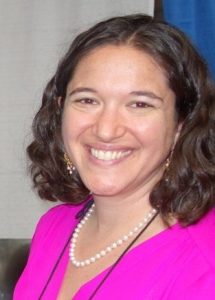 President
President
Keeping Informed
By Caia Schlesinger
NJTESOL/NJBE is proud to offer our members an e-mail discussion list through which subscribers can read about employment opportunities, workshop and conference announcements, questions about state laws and standards, advice, best practices, material searches, testing questions, and advocacy. You must be a member of NJTESOL/NJBE to participate. Members can e-mail webmaster@njtesol-njbe.org to be signed on. Be sure to mention if you are a member of NJTESOL/NJBE. If you are not a member, please use the online form and payment method or download an application and send it in before asking to be put on the list.
While we encourage use of the hotlist, keep in mind that we have over a thousand recipients. Please do not include sensitive information such as student names or details that make them identifiable. Also, be careful what you write about your district, school, or other teachers, as it may get back to them. You will be asked to rewrite your message and resend it. Here is a list of documents that are frequently referred to when either an NJTESOL/NJBE Board Member or a member of the New Jersey Department of Education (NJDOE) is replying to you:
- Bilingual Education Administration Code for New Jersey
- Implementing ELL Programs
- Immigrant Students and School Enrollment
- Implementation of World Languages Graduation Requirements for ELLs
- USDE Civil Rights for ELLs Webpage
- USDE ELL Program Toolkit
- NJ ESSA Plan – page 375
Remember, if you have a specific question, you can always email one of our Special Interest Group Representatives. You can find their areas of specialty and their email addresses here. The NJDOE Bureau of Bilingual/ESL Education also has an email address that you can use to contact them with any questions you might have: ELL@doe.nj.gov
If you have any questions, you can contact me.
Caia Schlessinger, President, NJTESOL/NJBE ESL Teacher, Highland Park School District
Vice President
An Interview with Historian Barbara Tedesco
By Maggie Churchill
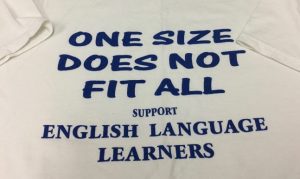
Early advocacy t-shirt from NJTESOL/NJBE archives
This year, NJTESOL/NJBE*, Inc. turns fifty. And so do I. Feeling nostalgic, and eager for the stories from the early years of the organization, I sat down to interview our historian, and past president (1989-1991), Barbara Tedesco. What I’ve learned from Barbara is the rich history of advocacy that dates back to the beginning of NJTESOL/NJBE, and the stories of dedicated professionals across our state determined to continue this tradition.
*NJTESOL/NJBE- New Jersey Teachers of English to Speakers of Other Languages/New Jersey Bilingual Educators
What is your role in NJTESOL/NJBE?
The historian is the keeper of the archives, which are housed at the Newark Public Library. There has been one prior historian, Carole Schaeffer-Koros (Past President). I have served on the Executive Board since 1979 (originally as the membership chairperson). The historian wasn’t required to attend meetings, but I did, and so the position evolved. Because I have far-reaching knowledge, I can tell how things were, the mistakes, and what we’ve learned. It is important to have someone who knows the history of the organization.
How did the organization get started?
The New Jersey Department of Education (NJDOE) started the push for bilingual education at a meeting in 1965, organized by Paul Hilaire, World Language Supervisor. Statewide committees were established on certification requirements for bilingual and ESL teachers and there was soon a need for an organization. We have Elaine Adler, from NJDOE, and Janet Susi, from Montclair State Teacher’s College, to thank for spearheading the effort. The first official meeting of NJTESOL was held on October 18, 1969. Susi served as the first president. In the beginning, there were questions about what this organization would look like. There was a real urgency to be practical and respond to the needs of teachers. New Jersey became the third state to form as an affiliate of TESOL, Inc. Several years later, we also became an affiliate of the National Association of Bilingual Educators (NABE).
What was NJTESOL/NJBE like fifty years ago?
Everything was handwritten, of course. Meetings were held at people’s houses. Originally, there were eight members on the Executive Board. The original mission of the organization was to promote scholarship and disseminate information to strengthen all levels of instruction and research through cooperation with other groups having similar concerns. As I read through so many of old minutes, I see that history does repeat itself: teacher shortage, retention, certification, code compliance, professional development- these are the recurring themes. It is funny how the more things change, the more they stay the same.
How would you describe the approach to bilingual and ESL pedagogy fifty years ago?
At the time, we were witnesses to change. The law was new, so teachers were left to do whatever we needed to do in our classrooms. The instruction was focused heavily on grammar and linguistics. There was definitely a good deal of skill-drill-and kill .I remember using the Lado series, which was grammar-based.
Professionally, we talked more about basic interpersonal communication skills (BICS**), rather than cognitive academic language proficiency (CALP**). Today, teachers are aligning teaching with learning standards- WIDA and the New Jersey Student Learning Standards (NJSLS). Now, everyone should be addressing the needs of students in collaboration with general education teachers and the delivery of language and content simultaneously.
** BICS and CALP. James Cummins, 1979.
What do you feel is the greatest challenge we face now as an organization?
There are different challenges based on the perspective. One challenge that remains from the early days is teacher shortage. As an organization, our role in advocacy has drastically increased. We need to do more to recruit future teachers at the high school level. Consequently, teacher shortage becomes a matter of advocacy. People assume it is up to a handful of people to advocate. It is everyone’s role. We need more people to be advocates. What might the future bring for NJTESOL/NJBE?
I hope that our growth continues. Our membership is not reflective of the number of bilingual and ESL teachers in the state. Since we now have the Seal of Biliteracy, and are making more of supporting dual language, I hope that we start to build the road to bilingualism from the early childhood years. In a word, advocacy- everything is connected, and what is old is suddenly new again.
The archives of NJTESOL/NJBE, Inc., are open to the public and located at the New Jersey Hispanic Research and Information Center of the Newark Public Library.
Maggie Churchill, Vice-President NJTESOL/NJBE
Historian
Legends: The Farewell Tour
By Barbara Tedesco
New Jersey has produced many memorable worldwide legends such as Harlan Coben, Anna Quindlen, Meryl Streep, Bon Jovi, Bruce Springsteen, The Four Seasons, Mark and Scott Kelly, Clara Maass, Millicent Fenwick, Carli Lloyd, Carol Blazejowski, Bill Bradley, Yogi Berra, Phil Rizzuto, etc. I am sorry if I left out any of your favorites. These individuals have made contributions that span the globe. Now, I dedicate this Voices article to legends in the field of bilingual/ESL education that have made long-lasting contributions. Some of you may be too young to recognize their names, but their legacy continues. Look them up.
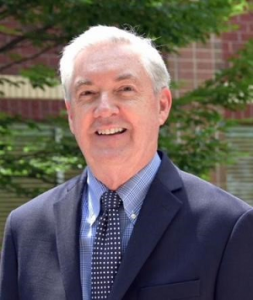 Jay Doolan, Ed.D earned his B.A. in English from Fairfield University in Connecticut, and his M.Ed. in counseling and psychology, and Student Personnel Services certificate from the College of New Jersey. He then attained his ESL (English as a Second Language) and Supervisors’ certificates from Rider College, and his Doctorate in Education Administration from Rutgers University. Jay was a Peace Corps Volunteer; his service took him to Ghana, Africa, as a college ESL teacher and teacher-trainer. In Konya, Turkey, he served as a high school ESL teacher. Back in New Jersey, Jay was an ESL teacher and guidance counselor in the Camden Schools. His next step took him to the New Jersey Department of Education (NJDOE), in what was then the Division of Bilingual and Compulsory Education, as an ESL consultant moving to the manager of the Office of Bilingual Education and the Office of Homeless Children and Youth. His next position at the NJDOE included Director of the Urban Assistance Center, Division of Field Services (North); Director of Direct Services; Director of Office of Academic and Professional Standards; and, Assistant Commissioner for the Division of Educational Standards and Programs. Upon his retirement, which was not long-lived, he was named Acting Executive Director for the New Jersey Principals and Supervisors Association (NJPSA) and ultimately, Director of Professional Services, Foundation for Educational Administration (FEA) of NJPSA. Jay was the liaison from the NJDOE to the NJTESOL/NJBE’s Executive Board.
Jay Doolan, Ed.D earned his B.A. in English from Fairfield University in Connecticut, and his M.Ed. in counseling and psychology, and Student Personnel Services certificate from the College of New Jersey. He then attained his ESL (English as a Second Language) and Supervisors’ certificates from Rider College, and his Doctorate in Education Administration from Rutgers University. Jay was a Peace Corps Volunteer; his service took him to Ghana, Africa, as a college ESL teacher and teacher-trainer. In Konya, Turkey, he served as a high school ESL teacher. Back in New Jersey, Jay was an ESL teacher and guidance counselor in the Camden Schools. His next step took him to the New Jersey Department of Education (NJDOE), in what was then the Division of Bilingual and Compulsory Education, as an ESL consultant moving to the manager of the Office of Bilingual Education and the Office of Homeless Children and Youth. His next position at the NJDOE included Director of the Urban Assistance Center, Division of Field Services (North); Director of Direct Services; Director of Office of Academic and Professional Standards; and, Assistant Commissioner for the Division of Educational Standards and Programs. Upon his retirement, which was not long-lived, he was named Acting Executive Director for the New Jersey Principals and Supervisors Association (NJPSA) and ultimately, Director of Professional Services, Foundation for Educational Administration (FEA) of NJPSA. Jay was the liaison from the NJDOE to the NJTESOL/NJBE’s Executive Board.
A side note about Jay is that he has performed in many productions on stage and has stage presence and an unbelievably great voice. In Franz Lehar’s The Merry Widow, an operetta at the Trenton War Memorial, he played the tenor role of Danilo Danilovitsch, First Secretary of the Pontevedrin embassy and Hanna’s former love.
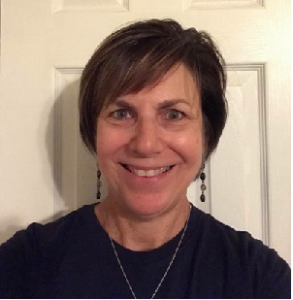 Pam Leggio Castellanos Garozzo graduated from Trenton State College, now The College of New Jersey, with a B.S. in Elementary and Early Childhood Education. Her career took her to the National Origin Unit of the Office of Equal Educational Opportunity (OEEO) where she had the responsibility of developing desegregation plans pertaining to national origin. She was also responsible for developing and conducting in-service training for professionals in areas related to bilingual/ESL and multicultural education. She moved to the Division of Field Services, where she directed the operations of the 21 County Offices of Education and Katzenbach School for the Deaf, among others. Her final position at the NJDOE was serving as the Director of County and Regional Services. She proudly served as Secretary on the NJTESOL/BE Executive Board.
Pam Leggio Castellanos Garozzo graduated from Trenton State College, now The College of New Jersey, with a B.S. in Elementary and Early Childhood Education. Her career took her to the National Origin Unit of the Office of Equal Educational Opportunity (OEEO) where she had the responsibility of developing desegregation plans pertaining to national origin. She was also responsible for developing and conducting in-service training for professionals in areas related to bilingual/ESL and multicultural education. She moved to the Division of Field Services, where she directed the operations of the 21 County Offices of Education and Katzenbach School for the Deaf, among others. Her final position at the NJDOE was serving as the Director of County and Regional Services. She proudly served as Secretary on the NJTESOL/BE Executive Board.
A personal note about Pam: she has been the voice of opioid awareness after the death of her 23-year-old son, Carlos. The former governor of NJ used Carlos’ story to launch a statewide campaign, called ReachNJ. She became the face of that campaign. I can still remember the first time I saw her on television as she shared her experience of her first Mother’s Day without her son. My heart broke and cried along with her. She and her husband, Mike, have spoken around the country in support of parents who have lost children and loved ones to the disease of substance abuse disorder. They worked non-stop working with legislators to help enact laws to provide immediate treatment and support to those suffering from the disease. For her efforts, the Southeastern PA chapter of Pro-Act honored Pam, receiving the Ambassador for Recovery Award in December 2017.
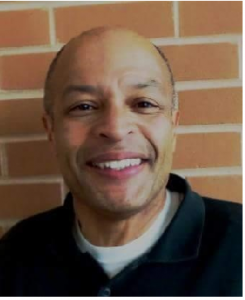 Kenneth Figgs attained his B.A. in Spanish from Glassboro State College, now Rowan University, and afterwards received certifications in bilingual, elementary and ESL education. Ken also achieved his School Administrator (Principal and Supervisor) certificates and completed all coursework toward his Ed. M. at Harvard University. His first position was as an ESL teacher in the Bridgeton Schools before leaving to become the Coordinator for Technical Assistance in the Office of Equal Educational Opportunity at the NJ DOE. His career pathway included some of the following roles: Project Supervisor for National Origin Desegregation, Curriculum Supervisor in the East Orange Schools, Principal of Blessed Sacrament in Trenton, Program Manager at the NJ DOE Improvement Center South in Sewell, Regional Director for Catapult Learning in Robbinsville, Program Manager for the Office of Charter Schools. He ended his career as the Manager for Administrator Training Programs: Office of Licensure and Credentials at the NJDOE. Ken had several positions on the NJTESOL/NJBE Executive Board. Annually, you will find him welcoming attendees to the NJTESOL/NJBE spring conference at the registration table.
Kenneth Figgs attained his B.A. in Spanish from Glassboro State College, now Rowan University, and afterwards received certifications in bilingual, elementary and ESL education. Ken also achieved his School Administrator (Principal and Supervisor) certificates and completed all coursework toward his Ed. M. at Harvard University. His first position was as an ESL teacher in the Bridgeton Schools before leaving to become the Coordinator for Technical Assistance in the Office of Equal Educational Opportunity at the NJ DOE. His career pathway included some of the following roles: Project Supervisor for National Origin Desegregation, Curriculum Supervisor in the East Orange Schools, Principal of Blessed Sacrament in Trenton, Program Manager at the NJ DOE Improvement Center South in Sewell, Regional Director for Catapult Learning in Robbinsville, Program Manager for the Office of Charter Schools. He ended his career as the Manager for Administrator Training Programs: Office of Licensure and Credentials at the NJDOE. Ken had several positions on the NJTESOL/NJBE Executive Board. Annually, you will find him welcoming attendees to the NJTESOL/NJBE spring conference at the registration table.
A personal note: Ken has an outstanding voice and has performed in several NJ productions. He performed in The Merry Widow at the Trenton War Memorial; yes, the same performance where Jay Doolan had the lead role. And, do not get him confused with his twin, Keith, who served as Interim Assistant Superintendent of the Vineland Public Schools.
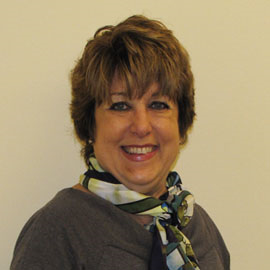 Grisel Lopez-Diaz, Ph.D. achieved her B.A. in Modern Languages, her Master of Arts in Comparative Literature at NYU (New York University) and, ultimately, her Ph.D. from Fordham University. Her dissertation title was:The relationship between educational styles and varying degrees of bilingualism. She began teaching Spanish, French, and Italian in Brooklyn before she made the move across the Hudson River to Jersey City, New Jersey where she was a bilingual elementary teacher, district ESL Supervisor, Executive Assistant to the State Assistant Superintendent in the Division of Educational Programs and Services, and, lastly, to Associate Superintendent: Department of Curriculum and Instruction. After her retirement from the Jersey City Public Schools, she became an adjunct at Fairleigh Dickinson University (FDU) as well as New Jersey City University (NJCU). Furthermore, she taught several modules at NJEXCEL, (EXpedited [sic] Certification for Educational Leadership), on what future administrators need to know about working with ELs. Her last position was as a professor in the department of Modern Languages at NJCU. Grisel has authored and edited numerous publications and presented on a variety of topics. She served on the Executive Board of NJTESOL/NJBE as well as President of the Foreign Language Educators of New Jersey (FLENJ). She has two children and her daughter, Kristina Dugan, is an ESL teacher in the Livingston Public Schools.
Grisel Lopez-Diaz, Ph.D. achieved her B.A. in Modern Languages, her Master of Arts in Comparative Literature at NYU (New York University) and, ultimately, her Ph.D. from Fordham University. Her dissertation title was:The relationship between educational styles and varying degrees of bilingualism. She began teaching Spanish, French, and Italian in Brooklyn before she made the move across the Hudson River to Jersey City, New Jersey where she was a bilingual elementary teacher, district ESL Supervisor, Executive Assistant to the State Assistant Superintendent in the Division of Educational Programs and Services, and, lastly, to Associate Superintendent: Department of Curriculum and Instruction. After her retirement from the Jersey City Public Schools, she became an adjunct at Fairleigh Dickinson University (FDU) as well as New Jersey City University (NJCU). Furthermore, she taught several modules at NJEXCEL, (EXpedited [sic] Certification for Educational Leadership), on what future administrators need to know about working with ELs. Her last position was as a professor in the department of Modern Languages at NJCU. Grisel has authored and edited numerous publications and presented on a variety of topics. She served on the Executive Board of NJTESOL/NJBE as well as President of the Foreign Language Educators of New Jersey (FLENJ). She has two children and her daughter, Kristina Dugan, is an ESL teacher in the Livingston Public Schools.
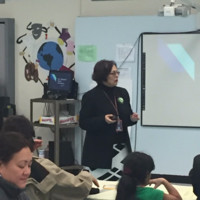 Maria Encarna B. Romero began her studies at Montclair State University obtaining her B.A. with a major in Spanish and a minor in Social Studies. She continued on to Kean University for Bilingual, Elementary, ESL, Supervisor, and Principal Certificates. There, she also received her Masters in Bilingual Education/ESL. Maria is a doctoral candidate in Curriculum, Instruction and Assessment at Walden University. Her entire work career was devoted to the Carteret Public Schools. She climbed the educational ladder from teacher to Supervisor. She chaired NJPSA’s ELLs committee. Currently, she is volunteering on the Executive Board of NJTESOL/NJBE where she has been called upon to provide testimony whenever needed.
Maria Encarna B. Romero began her studies at Montclair State University obtaining her B.A. with a major in Spanish and a minor in Social Studies. She continued on to Kean University for Bilingual, Elementary, ESL, Supervisor, and Principal Certificates. There, she also received her Masters in Bilingual Education/ESL. Maria is a doctoral candidate in Curriculum, Instruction and Assessment at Walden University. Her entire work career was devoted to the Carteret Public Schools. She climbed the educational ladder from teacher to Supervisor. She chaired NJPSA’s ELLs committee. Currently, she is volunteering on the Executive Board of NJTESOL/NJBE where she has been called upon to provide testimony whenever needed.
A bit of personal information: Maria has two children, each of whom has pursued a career in education. Her daughter, Megan, is an ESL teacher in Linden; her son, Gregory, is a Vice-Principal at Elizabeth Avenue School in the Franklin Township School District and currently serves as secretary on the NJTESOL/NJBE Board. In addition, his wife, Tara, is principal of Nathan Hale Elementary School in Carteret. By the time you read this issue, Maria will be coming out of retirement (last of the Farewell Tour) to take on the position as Coordinator of World Languages at the NJDOE.
This has been a slight glimpse into the careers of these people. Each has garnered copious honors and accolades too numerous to mention. Those of you that know any one of them can testify that these individuals have been leaders in our field.
I have known them each personally and professionally over many decades. They represent the embodiment of caring and working effortlessly in front, as well as behind the scenes, to do the right thing for all students, their families, and teacher education at all levels. I wish them health in this final retirement. I hope I speak for all us in thanking our legends and the impact that each has left behind. They have raised the bar high for those of us still active. Here is hoping that the next generation continues the work all for language minority students.
Barbara Tedesco, Retired Principal Roselle School District; Co-Manager of Language & Literacy Associates for Multilingual and Multicultural Education (LLAMAME); Past President of NJTESOL/NJBE and current Historian.
Exhibitor Liaison
Confronting Trauma
By Tina Kern
 Another workshop and another “flavor of the month”. How many meetings and speeches have you attended that presented information and then left you with either wanting more…or less? Our expectations start high, thirsting for inspiration and information to help us in the classroom and make our career enlightening and, honestly, a little less stressful. I anxiously await answers to my open-ended question: How do I help my students? And some days I am pleasantly surprised to find that nugget of information that opens the door a little.
Another workshop and another “flavor of the month”. How many meetings and speeches have you attended that presented information and then left you with either wanting more…or less? Our expectations start high, thirsting for inspiration and information to help us in the classroom and make our career enlightening and, honestly, a little less stressful. I anxiously await answers to my open-ended question: How do I help my students? And some days I am pleasantly surprised to find that nugget of information that opens the door a little.
I attended a trauma workshop this summer that made me reflect upon my years teaching our newest immigrants. I looked forward to clarification about trauma and how it affects our students. I thought about my experiences to date here at the high school, in the newest phase of my career. I started to rethink about some of the events in light of my new perspective.
It was the first day of the school year. They entered the classroom and took their designated seats at the tables, looking expectantly at me, some clutching their backpacks, others laying down their cell phones: at first glance looking like any other classroom in New Jersey. But this classroom was different. It was filled with ESL (English as a Second Language) students, most of who were rising above their backgrounds that were riddled with various levels of trauma. In addition, many of them had interrupted learning. How does an ESL teacher accommodate the needs of these students?
Over the years, the face of ESL teaching has changed dramatically. In my district, just in the past 25 years, the tides of immigration have made the teaching of ESL grow with each new group. For example, 25 years ago, the ESL population consisted mostly of students from South American countries such as Colombia. These students had an intact and progressive educational background that transferred easily and made their transition to the English language almost seamless. As time passed, our students came from various countries in Central America, where the educational system varied considerably and so necessitated a change of methods to meet their needs. Then, as our students progressed through the district and became parents, they enrolled their children. Though they were born here, these children did not enter school speaking English. This new population made us look through a different lens. Perhaps encouraging preschool programs could help the growing population of new students before they entered Kindergarten. The waves of different groups continue to grow and change.
The latest group of immigrants, though, caused us to step back and reevaluate again. About five years ago, a group of unaccompanied minors, most with interrupted education, stepped across our borders, into homes where their mothers had integrated into life here without them. About four years ago, I entered their world and a new era of my life. I had been pulled from the comparatively quiet world of transitioning ESL students in the lower grades to the high school where the pulse and activity was frenetic. I was the new ESL teacher at the high school. I was nervous, but though I had five certifications and much experience, nothing prepared me for the most life-changing events of my life.
The first day, I started teaching very large classes of confused teenagers that had no idea what we were doing together in the classroom. They had not adjusted to the educational rules and culture of the high school. They had no idea what the expectations of the school were and they were not ready to integrate and conform. Some displayed a false bravado born of their traumatic and dangerous journey. Some clung to each other while others strutted into the classrooms, charging the atmosphere with their false pretentiousness. Others glanced left and right, seemingly to absorb the confidence of their peers. Their eyes reflected their past experiences, their flight from their countries and the unspeakable events they survived.
That afternoon I drove home in a trance, wondering what I could do to engage some of my surly and confused teenage groups. At that time, I had no idea that because many of my students had experienced unbelievable trauma in their lives, I could not project how they would impact my lessons. I am a teacher. I felt qualified to teach them, but what I did not know at the time was that these students would need so much care and understanding way beyond the scope of our “usual” ELLs. I provided a safe environment, support, and patience. At times, and for some, it was never enough.
I looked everywhere for lessons to engage them. I reread Stephen Krashen’s writings about the affective filter. I embraced “restorative practices”, for a discipline philosophy for building community in the classroom. Every day, some of my colleagues teaching bilingual classes and I, in an effort to pool our resources, reflected on some of the mercurial behavior and inconsistencies of our students.
Then I took trauma training. I learned how incidents that singularly never would be considered trauma added up to impulsive and spontaneous behavior that clashed with an environment conducive to learning. The more I learned and the more I absorbed, the more I shook my head and clarified my thinking. This made sense.
I learned about the difference between PTSD (Single Event Trauma: Post Traumatic Stress Disorder) and Developmental Trauma (when bad things happen more than once). I learned about hyper-vigilance and hyper-arousal. Stephen Krashen’s theory says, “Low motivation, low self-esteem, and debilitating anxiety can combine to ‘raise’ the affective filter and form a ‘mental block’ that prevents comprehensible input from being used for acquisition. In other words, when the filter is ‘up’, it impedes language acquisition.” (Retrieved from: https://apps.esc1.net/ProfessionalDevelopment/uploads/WKDocs/58121/2.%20Stephen%20Krashen.pdf).
Similarly, trauma training also acknowledges that if your brain’s needs are not met, you are not ready to learn what is presented in the classroom. “Educators must understand that to respond in a trauma-informed way means that their students must feel safe and to regulate their emotions before they can learn.” When we think our students are not listening, often they cannot listen at that moment. (Sadin, Melissa. Ducks and Lions: Trauma Sensitive Resources, LLC. Teacher’s Guide to Trauma.)
Our students’ brains may have developed differently from ours. We actually saw pictures of a child’s brain with an over active amygdala and an underachieving hippocampus. The amygdala in the brain is responsible for the emotions and moods you feel. The hippocampus is responsible for the processing and memory. This means that when the amygdala is what is guiding our students’ actions, the result is an inability to regulate themselves. Many times it is not these students’ fault that they struggle to learn and pay attention. The many traumas they experienced might have changed the development of their brains. They might be exhibiting behavior of a child much younger because of the trauma in their lives.
And, what trauma is considered life changing? We learned about ACES (Adverse Childhood Experiences) like abuse, neglect, and household dysfunction which all contribute to children and young adults and their ability to learn and access their executive functions. There is an ACES questionnaire that yields scores that could show that many of your students are at risk. These traumas affect students and their brain development until about the age of 18! They affect their memory, their logic and functioning, their comprehension, auditory and visual processing, their attention, processing speed and language development. They struggle in the classroom as they try to understand what you are saying. When we think they are not listening, is it because on that day at that moment, they may not be able to hear you? When they overact to a direction, is it that they cannot regulate what they are feeling at that moment?
What can we do with some of our students that are struggling after experiencing trauma which resulted in actual changes to their brain function and their ability to learn what we are teaching? First of all, we have to recognize it. We have to learn how to react to it. It is not personal. Don’t have a power struggle with these students. They are survivors. Provide a safe environment. Make a connection with them. Even mentioning a new haircut can start the day positively for a student. Learn about brain development and teach these students that their brains may be affecting them that day. … So take down that star chart. It will only reinforce what your trauma and struggling students cannot do. Find something they can do. Praise them when you can. I still remember – and have used in my classroom—this anecdote: A student failed a test. He got only one correct out of 10 problems. When the teacher gave back the paper, she nodded. The student later asked her why. “Because, she said, you got one right.” “But,” the student replied, “I got nine wrong”. “You didn’t get them all wrong. You got one correct…and next time you will get more correct.”
Knowing about trauma is important because it affects so many people. It can help you in any classroom… or life. On a personal level, knowing about trauma has been instrumental in helping me understand better not only my students, but, sometimes, family members or friends. It has enabled me to show more patience and support, and to look beyond the anger and frustration others may feel at times. Seemingly innocuous or singular events can result in trauma in anyone.
Why don’t we get training in special education techniques and trauma? Why are we expected to identify problems for which we have had no guidance or training? I found during my various roles as an ESL teacher in various schools, that I was a “specialist”, not part of any department or group. It was almost as if the system didn’t know what to do with us. When, for example, the fifth grade unit had workshops geared to them, though I taught fifth grade, I was not included. At the middle or high school level, we have been part of the World Language Program or the ESL/Bilingual department, but without a content area. It seems that slowly our roles and our “importance” and relevance are changing, but we must assert ourselves. I try to attend workshops wherever I can. I read voraciously searching for answers. How lucky that I found help in time in order to be the best I can for these students.
It is all worth the days, months, and years of searching for better ways to teach and reach my students. When one student lingers after class, waits until the others leave, turns to me and says, “I just want you to know that you are my favorite teacher…because you care… and I am learning English with you.” I hold back my emotion as I gratefully thank him. I thank him because no matter how many days I go home frustrated, no matter how many family moments I missed, I made a difference – and that will keep me going on for a very long time.
Tina Kern, Liaison
Representative-at-Large
The Angst of September for an ESL Professional
By Joyce Farr
 September ushers in a whirlwind of tasks as our New Jersey schools open, tasks that are the necessary evils of most educators. For the ESL (English as a Second Language) professional, the responsibility is particularly exacting because of the civil rights obligations that the district owes English learners (ELs) and their parents, as well as compliance with the Bilingual Education Code and federal laws. Having just glanced at the Time magazine cover about the harsh realities of being a teacher in America, my heart sank with empathy. I am an educator in America, and while I do not work two or three jobs, the anguish of this teacher’s life, serving a span of eight grade levels in two buildings, returning to work the day after Labor Day is nonetheless real.
September ushers in a whirlwind of tasks as our New Jersey schools open, tasks that are the necessary evils of most educators. For the ESL (English as a Second Language) professional, the responsibility is particularly exacting because of the civil rights obligations that the district owes English learners (ELs) and their parents, as well as compliance with the Bilingual Education Code and federal laws. Having just glanced at the Time magazine cover about the harsh realities of being a teacher in America, my heart sank with empathy. I am an educator in America, and while I do not work two or three jobs, the anguish of this teacher’s life, serving a span of eight grade levels in two buildings, returning to work the day after Labor Day is nonetheless real.
Deprived of sleep, I grit my teeth each day, body almost broken from hours of standing or bending over children and youth, numbing my ears to permutations of the English language, whilst insisting they learn to learn and inspiring them to persevere so that their dreams will one day materialize. I am an educator in a field that so often is denigrated, an educator that shares the hostility my students may sometimes confront, being foreigners or immigrants who do not speak English. I am an educator expected to teleport from one building to another and squeeze in every ounce of effort and labor into her full day. So much so that while my brain and body collapsed from overwork into effortless sleep at night, my subconscious raced and ran my to-do list in the quiet darkness of a slumbering household. Did I print out the translated ACCESS reports? Check. Did I include the guide to the parent reports? Check. Did I type in the other criteria for continued or termination of service on those letters? Print out Culturegrams for the informational packets that contain strategies and accommodations for English learners in the mainstream classroom. Check. Meet with the supervisor. Meet with this core of teachers. Meet with the counselors. Make sure the students have ESL schedules and then juggle their schedules with mine.
I am an educator in America where education has been so undermined that certain educators lose their sense of respect for one another, or worse, civility towards their fellow beings and professionalism in a profession facing dire attrition. The load each one of us bears is onerous and kindness goes a long way. I carry a load that most teachers, if not almost all teachers in my school system, do not. Many teachers teach one or two grade levels at the most and teach about four periods, whilst some of us teach six. A teacher is usually designated a grade and a subject, e.g., 7th grade English teacher. The special area educators teach computer skills, music, art and other related arts across multiple grade levels but I am the ESL Specialist for Grades 5 through 12 and am a single-person department. The workload, the various non-instructional responsibilities, lesson preparation, and isolation, can be overwhelming at times as it consumes my personal life, my weekends, and my waking thoughts.
Not only was I roused several times the first couple of weeks of school at 3-ish or 4-ish a.m., my body no longer accepted rest as a default when worn down by a grueling day. My body was in revolt against sustenance and nutrition. I could feel the pangs of hunger but had little appetite. I only ate to survive and forced myself to swallow, tasting almost nothing in the morning. It was all I could do not to choke on a few bites. Sustained much of the day on a cup of espresso and some water, I eventually forced myself to pause about 1-ish p.m. so I could slide down some lunch and gulp down my tumbler of green tea to keep myself going. Lunch was some leftover or mix of scraps here and there, as I had little interest in cooking. I drove myself to get as much paperwork done by my self-imposed deadline, playing catch-up at the end of my day, when I no longer had classes to teach, no screening to complete on new entrants, no meetings, no complaints about ELLs (English language learners) from my colleagues. I wanted to draw boundaries so that I did not have to bring work home. But, home was unwelcoming after 5 p.m. when the chores stared at me in the form of four pairs of sneakers and socks, book bags and lunchboxes, clothes and hangers, school books and Chromebooks, all of which seemed more entitled to the living spaces than my sanity.
It is marvelous what magic a full night’s rest and a day off in the middle of a school week can do. Compassion from others, verbal and emotional support, and kindness to oneself, and the little random acts of kindness from allies can go a long way. Bright, cheery, and funny little 5th grade voices can bring sunshine in a tumultuous week. Motivated newcomers trying their hardest can inspire one on. I was blown away by a chronically absent student’s digital presentation on the parts of speech. This high-schooler knew his stuff and delivered it with newfound confidence. Returning students, gritting their teeth, and actually learning something new and challenging, after my welcome message based on Angela Lee Duckworth’s TED* talk on Grit**, made me proud to be an educator in America, in silent recognition that I modeled what life lesson I was trying to communicate.
Joyce Farr, NJTESOL/NJBE Representative-at-large, NJEA liaison
[*Editor: From www.ted.com : “TED is a nonprofit devoted to spreading ideas, usually in the form of short, powerful talks (18 minutes or less). TED began in 1984 as a conference where Technology, Entertainment and Design converged, and today covers almost all topics — from science to business to global issues — in more than 100 languages. Meanwhile, independently run TEDx events help share ideas in communities around the world.”]“**Grit is perseverance and passion for long-term goals. Grit entails working strenuously toward challenges, maintaining both effort and interest over years and years—despite failure, adversity, and even just stalls in progress.” Angela Duckworth
Technology Coordinator
Videos for Learning English
By Marilyn Pongracz
 Today, more sites have begun to require subscriptions to access their content, and some prices have doubled in the past year; yet, with effort, free, helpful online resources are found.
Today, more sites have begun to require subscriptions to access their content, and some prices have doubled in the past year; yet, with effort, free, helpful online resources are found.
For children, the blog from FluentU (Yes, they are advertising for their own site.) has some suggestions for using videos in the classroom. One suggested site is the hilarious Mr. Bean videos. They have little to no dialog, but students can narrate the sequences or make up their own dialog. For young learners, the blog writer recommends Sesame Street videos such as Grover and Alphabet Soup for practice with both the alphabet and restaurant vocabulary. Another suggested option is clips from animated Disney movies such as Up or Little Mermaid at the Palace, for more vocabulary practice and/or to sing along with.
Found through a Google search with content that might be humorous for adult students or college-age teens, the Learn English with TV Series offers fourteen free videos with downloadable lesson packets for ten of them. The site uses clips from favorite television shows for lessons on pronunciation, vocabulary, culture, and grammar through humor, jokes and real-life examples. such as Friends, Big Bang Theory, and How I Met Your Mother.
My college students recommend Engvid.com, especially for grammar. The concept of the site is simple but effective. The 1,344 videos are short lessons presented by various teachers writing on whiteboards. Students can choose lessons by level, teacher, and/or topic. Subjects include grammar, vocabulary, pronunciation, TOEFL (Test of English as a Foreign Language), or TOEIC (Test Of English for International Communication) test prep, and writing tips. The only drawback of the site is the difficulty in finding specific grammar lessons. For that, a web browser find tool is the best option. Some of the lessons can be reinforced through the online resources that are handout-type web pages with interactive quizzes that can be used as follow-ups to the videos. High school students may also find the lessons to be valuable.
Marilyn Pongracz is the Technology Coordinator for NJTESOL/NJBE and the English Language Resource Center Supervisor at Bergen Community College
From: http://angelineinghana.blogspot.com/
Parent and Community SIG Representative
 ANGELINE IN GHANA:
ANGELINE IN GHANA:
My Experience as an American Teacher Volunteering in Tamale, Ghana, July 2018
By Angeline Sturgis
WEDNESDAY, JULY 11, 2018
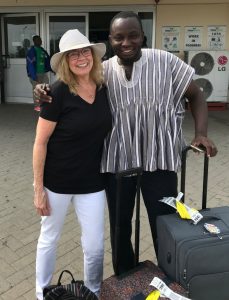 When I landed in Accra yesterday, I was met by the volunteer director, Fred, decked out in his hand-woven and hand-sewn smock, an obvious garment of pride only worn by the men from Tamale. He acted as if we were long-separated friends, reuniting after many years apart. I was thrilled at his enthusiasm, and delighted to be met by someone who knew my name right outside the noisy, crowded arrivals hall. He was asking me about my flight in perfect, singsong African accented English, when he suddenly turned to a man, slapped him on the back and began a rapid fire conversation in another language. I was so envious of the language shift, and couldn’t help noticing the other man was just as enthusiastic and smiley as Fred, though I was sure they had never met. “What language was that, Fred?” I asked. “Dagbani“ was his answer, “Tamale language.” Ah, it was obvious: they were both wearing smocks. Cool. While we waited in the departure lounge for my short flight to Tamale, he went to ask the check-in staff a question. Yep, different language, and not the Dagbani I had just heard. “What language was that, Fred?” “Oh that was Ga”, Accra language.” Not five minutes later he was chatting to the girl sitting next to us. And yes, it sounded completely different to me. This time he said he thought he knew her, or maybe her cousin. And the language? “That was Twi, from my family’s town, Kumasi.” But how did he know which language to use? Fred just laughed and said he could tell by the way she wore her hair, and besides you “just work your way through the languages and maybe you find the right one.” Oh be still my heart: “work your way through the languages?” Sure doesn’t take me long to get through English and then level 2 Spanish, till I resort to wild gestures, hoping my message gets across.
When I landed in Accra yesterday, I was met by the volunteer director, Fred, decked out in his hand-woven and hand-sewn smock, an obvious garment of pride only worn by the men from Tamale. He acted as if we were long-separated friends, reuniting after many years apart. I was thrilled at his enthusiasm, and delighted to be met by someone who knew my name right outside the noisy, crowded arrivals hall. He was asking me about my flight in perfect, singsong African accented English, when he suddenly turned to a man, slapped him on the back and began a rapid fire conversation in another language. I was so envious of the language shift, and couldn’t help noticing the other man was just as enthusiastic and smiley as Fred, though I was sure they had never met. “What language was that, Fred?” I asked. “Dagbani“ was his answer, “Tamale language.” Ah, it was obvious: they were both wearing smocks. Cool. While we waited in the departure lounge for my short flight to Tamale, he went to ask the check-in staff a question. Yep, different language, and not the Dagbani I had just heard. “What language was that, Fred?” “Oh that was Ga”, Accra language.” Not five minutes later he was chatting to the girl sitting next to us. And yes, it sounded completely different to me. This time he said he thought he knew her, or maybe her cousin. And the language? “That was Twi, from my family’s town, Kumasi.” But how did he know which language to use? Fred just laughed and said he could tell by the way she wore her hair, and besides you “just work your way through the languages and maybe you find the right one.” Oh be still my heart: “work your way through the languages?” Sure doesn’t take me long to get through English and then level 2 Spanish, till I resort to wild gestures, hoping my message gets across.
Aside from his multi-lingual talents, Fred has this way of making you feel like you are his new best friend for life. He had insisted on taking three selfies with me before we finished a cup of coffee in a café, and sent them to the other volunteers in Tamale. I wasn’t sure if it was just his outgoing personality or his linguistic ability that was responsible for the friendly treatment we were getting from everyone around us— airport staff, other travelers, taxi drivers waiting for riders. Then it occurred to me that virtually everyone we saw was happy, lively (despite the oppressive heat) and communicative. It was as though I’d just been dropped down in the middle of a convention of pathologically happy people. I put it down to the fact that there was bound to be a language, quickly ascertained by clues in dress or demeanor, that bonded two people. And once found, why not use that language to share a joke, or a compliment or good news? Now that’s a language worth learning.
What Does the Mean?
By Jeffrey Linn, Guest Contributor
 Who cares? You might say.
Who cares? You might say.
However, deriving helpful guidelines for when, or when not, to use the before the names of things is uniquely confounding in second language instruction.
This article takes a simplified linguistic approach with the following assumptions: a language is groups of words that have meanings, and these meanings drive word choice. These ideas are drawn from Columbia School (CS) linguistics, but the terms used herein are deliberately non-technical and the arguments presented do not follow the strictures of CS analysis.
As an educator, I am merely searching for insights that help with instruction.
To begin, there appears to be a meaningful delineation of the definite and indefinite articles: a = one unspecific thing, some = unspecified things, and the = specific thing(s).
If I say I saw a cat, it could mean any cat in the world. If I say I saw the cat, I am referring to a specific cat. I could mean the cat I mentioned earlier. I could have a multitude of reasons, but you know that I am talking about a specific cat.
If I say I went to the park, you know I am talking about a specific park. You may know nothing about this park; but, I do, and it is probably a local park. (More on this later.)
A problem arises when we consider the logic behind when, and when not, to use the before the names of things. There seems to be no perfect rule. You can make the claim that a definite article is not needed before a proper noun because the proper noun is already definite. Fair enough. But, then, how do you account for the fact that the rule works for New York, but not for the New York Yankees? Or, that it works for Lake Ontario, but not for the Atlantic Ocean, nor for the Raritan River? Or, that it works for Route 287, but not for the Garden State Parkway?
An example from www.grammarly.com seems to be an imposition of this rule: Incorrect: I studied the French in high school for four years. Correct: I studied French in high school for four years.
With a little thought, it is apparent that the first sentence is only “incorrect” if you are referring to the French language, but it could be used, rather, to refer to the French as a people. (I am not picking on Grammarly. Anyone who helps people write well has my vote.)
Here is a related example I concocted: The moon is intriguing. Moon is intriguing.
At first glance, the second sentence appears incorrect. An article is required. Except that one can envision a scenario where a man or woman with the first or last name, Moon, is being considered by a potential employer.
Perhaps, we could examine the use, or non-use, of the before names purely as function of the meaning of the. Furthermore, let us develop the meaning of the a bit more and suggest that it means a specific thing follows. It would follow then that if the thing under discussion is considered specific enough in its own right, we could omit the. We might even want to omit it to avoid being confusing.
In considering this hypothesis: Why do oceans, which are fantastically large and would seem to be quite well known, require the use of the with their names, but lakes and puny ponds do not?
There seems to be a principle that when something is not clearly bounded, it requires the use of the to help the listener understand that the speaker is talking about a specific thing.
Oceans are in fact not isolated units, but are approximated sections of a planetary ocean. They are unbounded. Lakes, on the contrary, are unitary.
When a speaker wishes a group of things to be viewed as one thing, the is employed, as with: the United States vs. America.
This principle also works for specific mountains versus mountain ranges, as with Mt. Desert versus the Rocky Mountains.
It works for languages in sort of a reverse way. English suggests the language or the nationality. The English implies the people group.
Both Queens and Yonkers, even though they have an -s at the end, perhaps are not perceived as plurals, but as possessives, since Queens was named for Catherine of Braganza, queen of English King Charles II, and Yonkers was the possession of the Jonker, or “young gentleman,” Adriaen van der Donck. Bronx is also a possessive, named for Jonas Bronck, but I think the conversion to the x ending created confusion, causing Bronx to be perceived as plural (a bunch of bronks!) and therefore it needs the use of the to show that is it being described as unitary. [Ed.: You would be going to The Broncks, or The Bronx, to visit the Bronck family, a single unit.]
Highways and rivers can both traverse long distances, for example, and would therefore give the impression of being unbounded, as with: the Mississippi River and the Garden State Parkway.
Highways that are numbered, however, are evidently already named specifically enough that they do not require the, as with: Route 287 and I-95.
Local roads, perhaps by virtue of being local, are considered, perhaps, bounded enough that they require no added signal of specificity.
In conclusion, this commentary proposes accounting for the use and non-use before names based on a core meaning of something like a specific thing follows. This, obviously, is not the end of the.
Questions or comments can be emailed to me at jlinn@franklinboe.org.
References:
http://csling.weebly.com/cslinguistics.html
https://www.grammarly.com/blog/articles/
https://www.etymonline.com/word/queens
http://www.memidex.com/yonkers
https://www.etymonline.com/word/bronx

